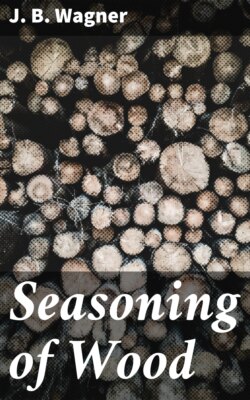Читать книгу Seasoning of Wood - J. B. Wagner - Страница 8
На сайте Литреса книга снята с продажи.
Structure of Wood
ОглавлениеThe softwoods are made up chiefly of tracheids, or vertical cells closed at the ends, and of the relatively short parenchyma cells of the medullary rays which extend radially from the heart of the tree. The course of the tracheids and the rays are at right angles to each other. Although the tracheids have their permeable portions or pits in their walls, liquids cannot pass through them with the greatest ease. The softwoods do not contain "pores" or vessels and are therefore called "non-porous" woods.
The hardwoods are not so simple in structure as softwoods. They contain not only rays, and in many cases tracheids, but also thick-walled cells called fibres and wood parenchyma for the storage of such foods as starches and sugars. The principal structural features of the hardwoods are the pores or vessels. These are long tubes, the segments of which are made up of cells which have lost their end walls and joined end to end, forming continuous "pipe lines" from the roots to the leaves in the tree. Since they possess pores or vessels, the hardwoods are called "porous" woods.
Red oak is an excellent example of a porous wood. In white oak the vessels of the heartwood especially are closed, very generally by ingrowths called tyloses. This probably explains why red oak dries more easily and rapidly than white oak.
The red and black gums are perhaps the simplest of the hardwoods in structure. They are termed "diffuse porous" woods because of the numerous scattered pores they contain. They have only vessels, wood fibres, and a few parenchyma cells. The medullary rays, although present, are scarcely visible in most instances. The vessels are in many cases open, and might be expected to offer relatively little resistance to drying.
